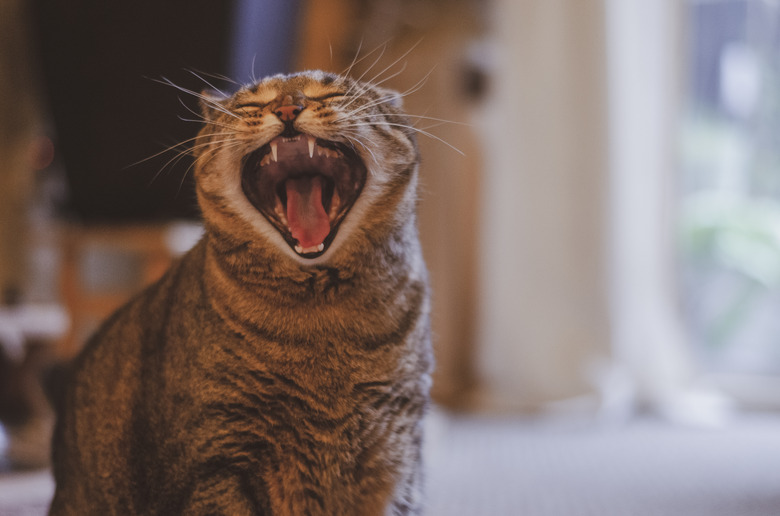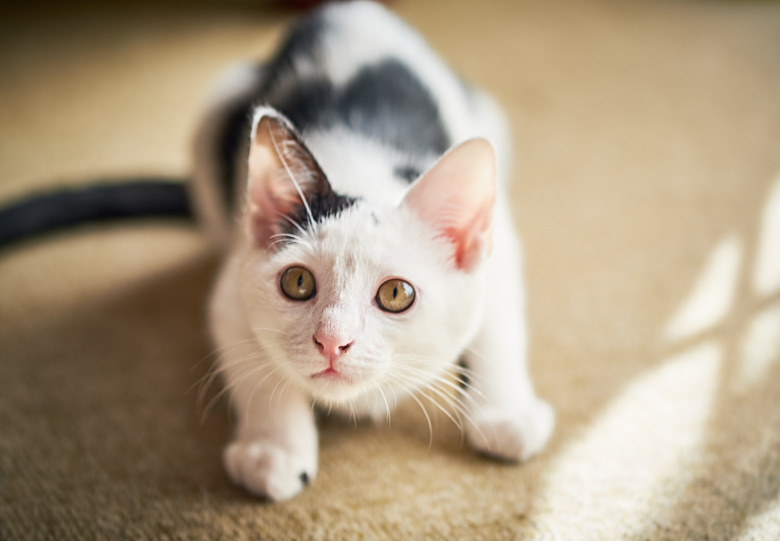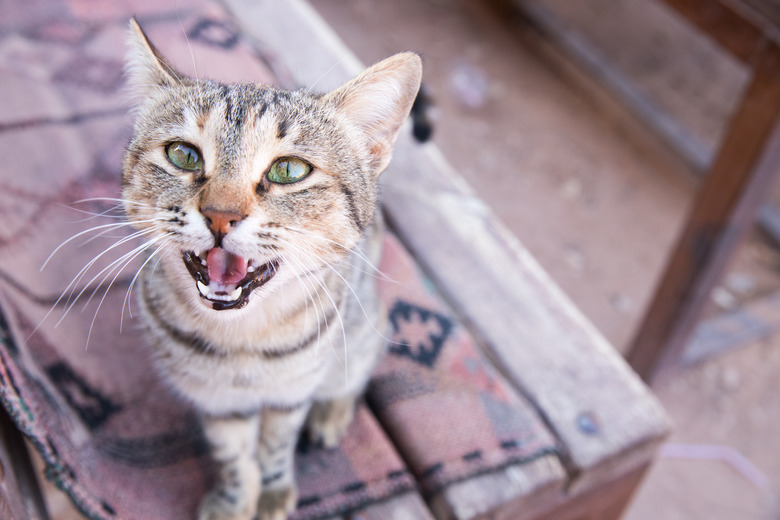What Do Your Cat's Noises Mean?
If you have a cat, you've likely found yourself at the receiving end of a series of cries and meows, perhaps accompanied by a curious glare, as if to ask a question. When cats make any type of sound they're doing so to express themselves, often asking for something we're not entirely sure of only because we aren't fluent in their language. From purring to chirping to meowing, sometimes incessantly at 2 o'clock in the morning, all of these sounds are made when your cat is trying to tell you something, but what are they saying?
Why are cats vocal?
Why are cats vocal?
To put it simply, cats are vocal because they want something. That something could be a basic need, like food, water, or affection, or it could be in an attempt to protect themselves by setting a boundary if they're stressed or asking for more space. Sometimes, a cat will vocalize because he is uncomfortable, which could signify that something is seriously wrong. In any case, cats don't cry, purr, or yowl for no reason, so it's important to familiarize yourself with some of the noises they make, and never ignore what they're trying to tell you.
Common sounds
Common sounds
If you've spent any amount of time with a cat, you have most likely heard at least some of the sounds that cats commonly make in an attempt at self-expression. The Humane Society includes purring, chirping, and trilling among some of the more positive sounds cats can frequently be heard making, the former signifying contentment, and the latter being the noises a mother makes to her young as a way of saying "follow me, this way," which carries over into adulthood. Sometimes, cats indoors can be heard making a twittering sound while watching prey, like chipmunks or small birds, outside of a window, which is likely due to the excitement.
Meowing
Meowing
We all know that the cat goes "meow" but what some of us may not realize is that there are actually about half a dozen different types of meows, and they are not all created equal. To help decipher which meow means what, the Journal of Veterinary Science breaks it down by the pitch and length of the cat's cry. According to the study, a cat's vocalizations are influenced both by their genetics and surrounding environment. The different pitches tend to indicate when a cat wants something, while short or long meows represent expressions. For example, one or even a few short, quick meows are a way of saying "hello," while a lingering meow that's a little more lengthy could be your cat's way of asking for something, like food, or to be let inside or outside.
Pitches are meow traits that you may want to be a little more concerned with. A low-pitch is regarded as a complaint like if dinner is dry when you know she prefers wet. The low pitch meows may sound similar to the low growl that cats emit when warning other cats to stay away. Middle-pitch cries are just that, cries for attention or meals, and high pitched meows usually indicate that something is wrong, like if your cat is in pain.
When to be concerned
When to be concerned
If your cat is crying non-stop, if the pitch is high, or if her cries are more like yowls that seem louder and more lengthy than regular meows, you should definitely mention this to your veterinarian. This rings especially true if your cat's cries are paired with another symptom that something about her health may be off, like compulsive licking, or a sudden refusal to eat her food. In any case, if your cat is crying or yowling incessantly, it's recommended that you take her in for a visit with a veterinarian as soon as possible to rule out any possible illness or diseases, and to get her back on a healthy track.
Other ways cats speak
Other ways cats speak
While the sounds that cats make can certainly clue us, or other cats, in on what they're trying to express, there are other ways that felines express themselves that are equally, if not more, effective. When communicating with the people and other felines in their lives, cats use their ears, eyes, and tails to express various wants and needs — including "stay the hell away from me" (ears back and flat against the head) to "I'm feeling curious and am pretty happy about that" (tail sticking straight up in the air with all fur laying flat). Cats also speak by marking their territory, which is what's happening when you see your cat rubbing her body up against your legs, or pressing her forehead onto your front porch steps, or other areas close to home.


